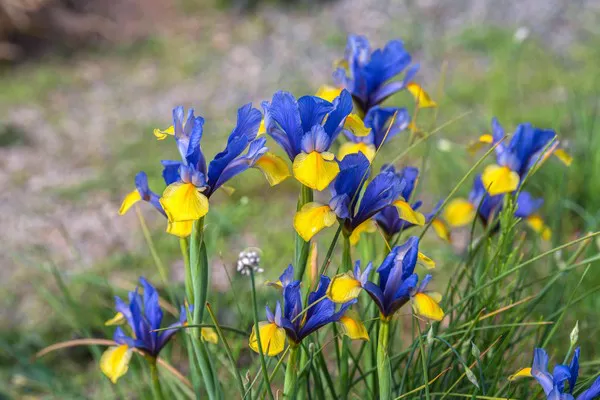Have you ever wondered which native plants nourish and support wildlife species, or how these plants rely on these creatures for essential services like pollination? In this exploration, we dive into the intriguing relationships between native plants and Canadian wildlife during the fall season.
To lend a helping hand to our diverse wildlife and observe them up close, consider cultivating native plants in your yard, on your balcony, or in a nearby community space.
New England Aster + Common Buckeye
In the late Canadian autumn, the New England aster (Symphyotrichum novae-angliae) graces the landscape with its bright rose-purple blooms and an inviting orange-yellow center. What’s truly remarkable about this flower is its continuous nectar production, even in chilly temperatures. As a result, it becomes one of the last bastions of nourishment for pollinators as fall progresses.
Migrating butterflies, like the common buckeye (Junonia coenia), strategically choose the New England aster to refuel and gather enough energy for their southbound journey. The flat platform of these flowers provides a welcoming spot for butterflies to rest while sipping nectar. This delightful pairing can be observed in southern Manitoba, Ontario, and Quebec.
Spotted Joe Pye Weed + Butterflies and Birds
As late summer transitions into early fall, the Spotted Joe Pye weed (Eutrochium maculatum) graces our surroundings. This tall perennial thrives in various moist environments, including wetlands, riverbanks, pondsides, and ditches.
Butterflies hold a particular fondness for this plant, as its nectar serves as a vital food source for Eastern tiger swallowtails and monarchs. Notably, the caterpillars of the pearl crescent butterfly feed on the very plant itself. Birds also join the banquet: ruby-throated hummingbirds indulge in its nectar, while finches savor its seeds. This harmonious gathering can be witnessed from British Columbia to the island of Newfoundland.
Canada Goldenrod + Hoverflies, Butterflies, and Birds
Canada goldenrod (Solidago canadensis) plays a crucial role in supporting local biodiversity. It generously produces nectar, pollen, and seeds, attracting various species, including butterflies, moths, native bees, and hoverflies.
Hoverflies, often mistaken for wasps or bees, are, in fact, flies that contribute to pollination by feasting on Canada goldenrod’s nectar and pollen. The abundance of seeds provided by this plant during early fall offers sustenance for songbirds such as sparrows and juncos before their southward migration. This collaborative feast can be witnessed across all Canadian provinces.
Cardinal Flower + Hummingbirds, Bees, and Butterflies
The Cardinal flower (Lobelia cardinalis) serves as a vibrant magnet for ruby-throated hummingbirds. These avian marvels are drawn to the strikingly bright red hue of the Cardinal flower’s blossoms and its energy-rich nectar, which fuels their astonishing wing-flapping rates of 60 to 80 times per second.
Insects, including halictid bees (commonly known as sweat bees) and larger bumblebees, also frequent the Cardinal flower. Some can “steal” nectar from the tubular flower’s base without participating in the pollination process. Furthermore, various swallowtail butterflies, such as the black, spicebush, and pipevine swallowtails, partake in the nectar feast.
If you’ve ventured through southern Ontario or Quebec in late summer or fall, you may have been fortunate enough to witness this captivating flower and its vibrant array of wildlife visitors.


